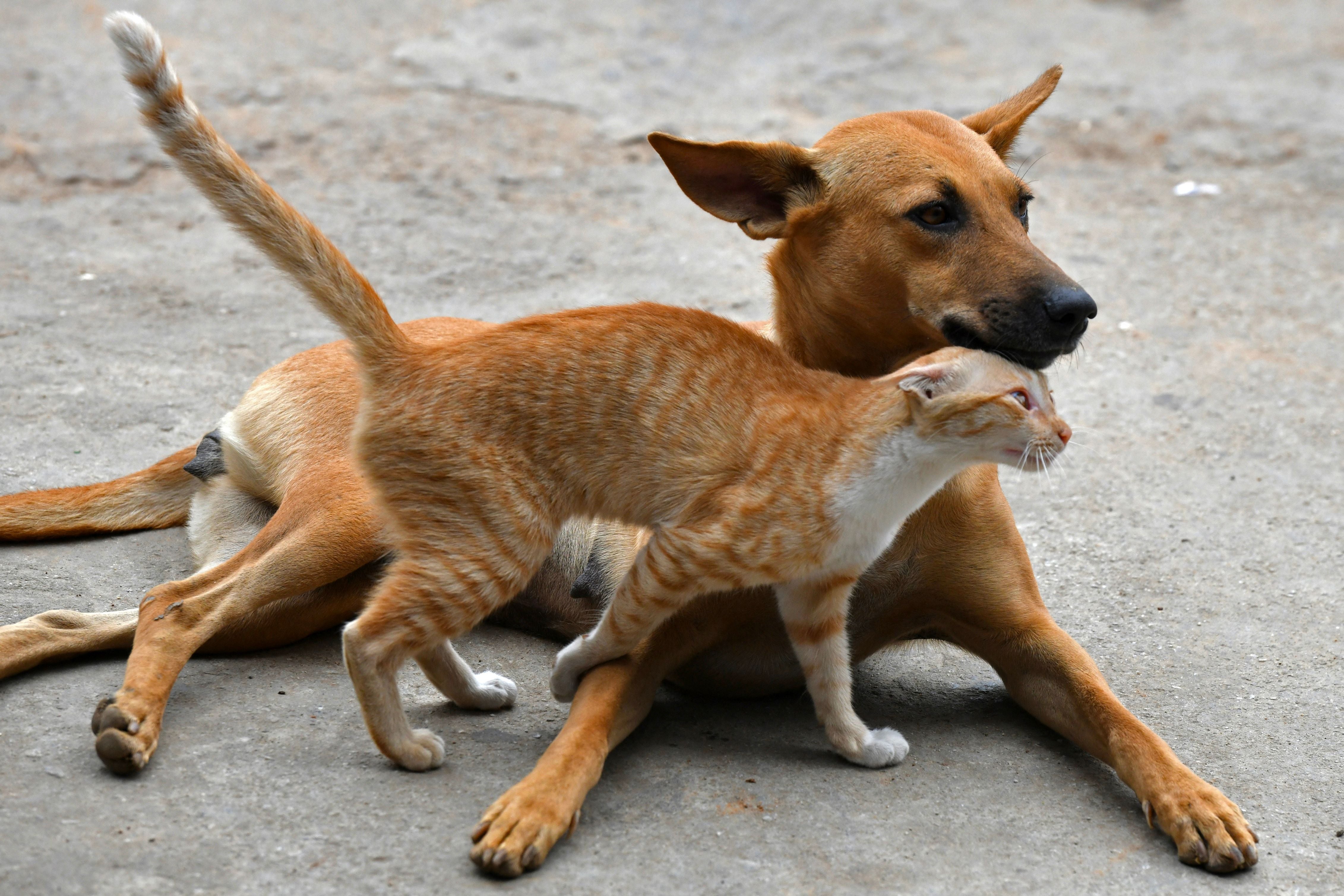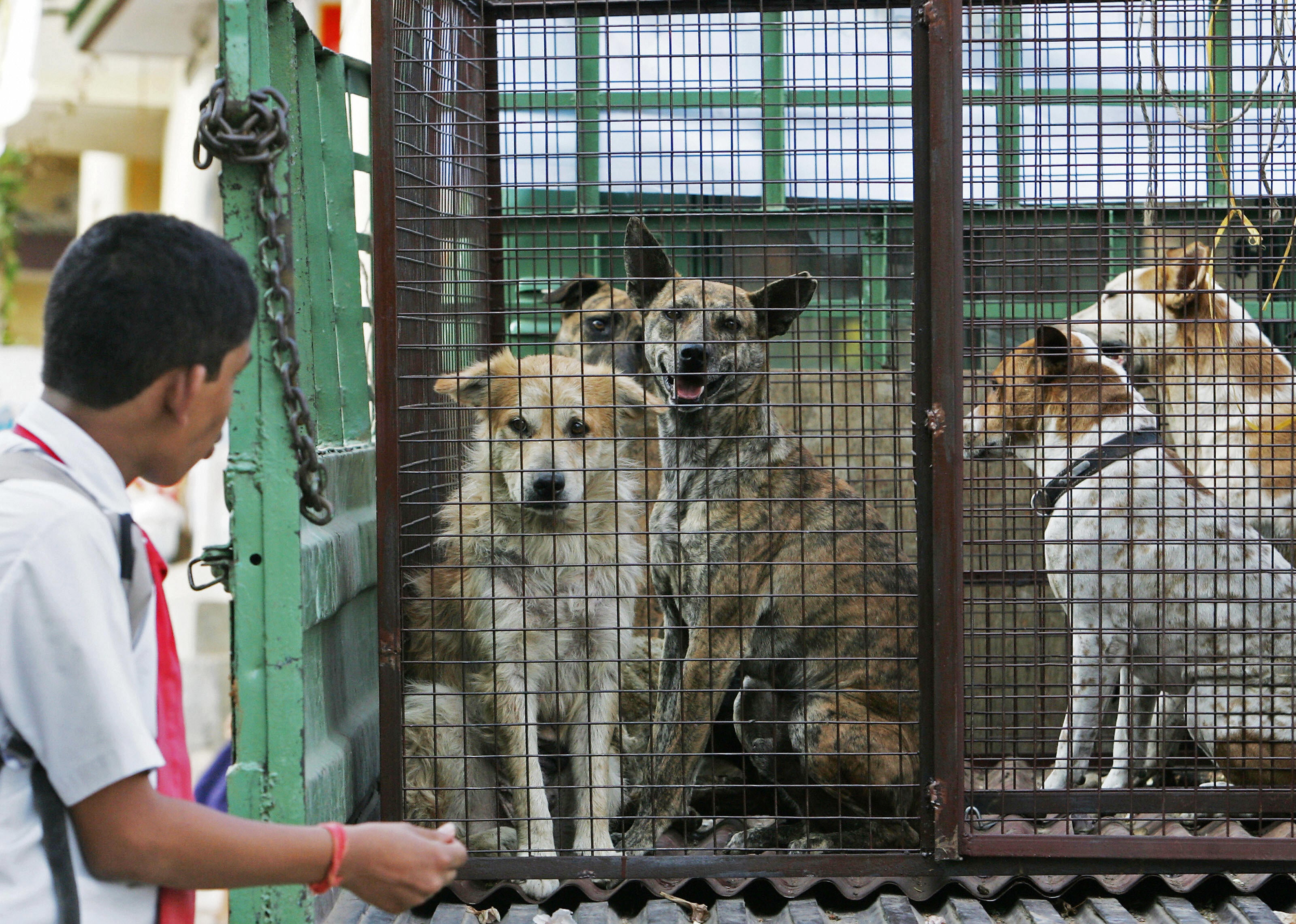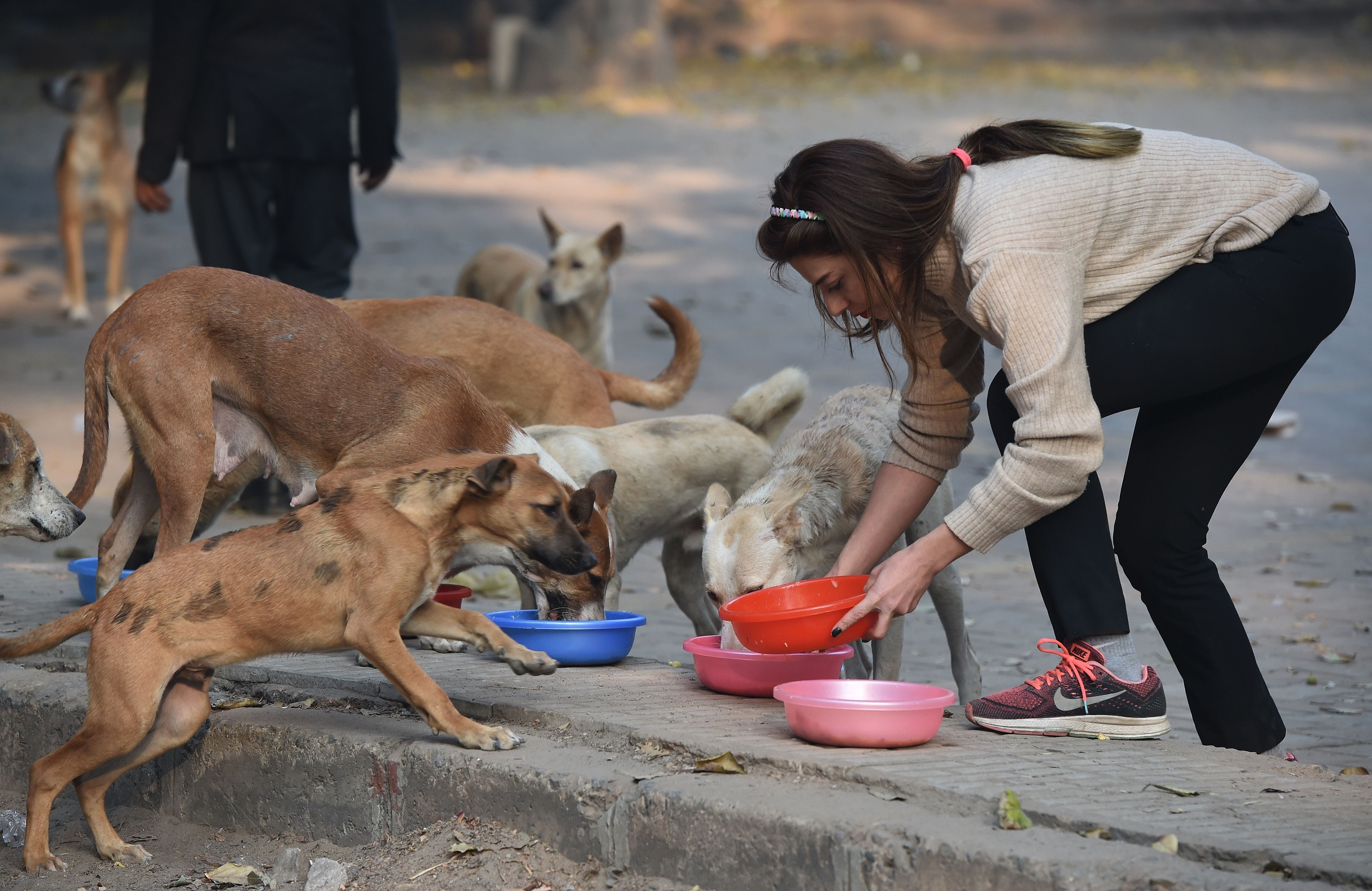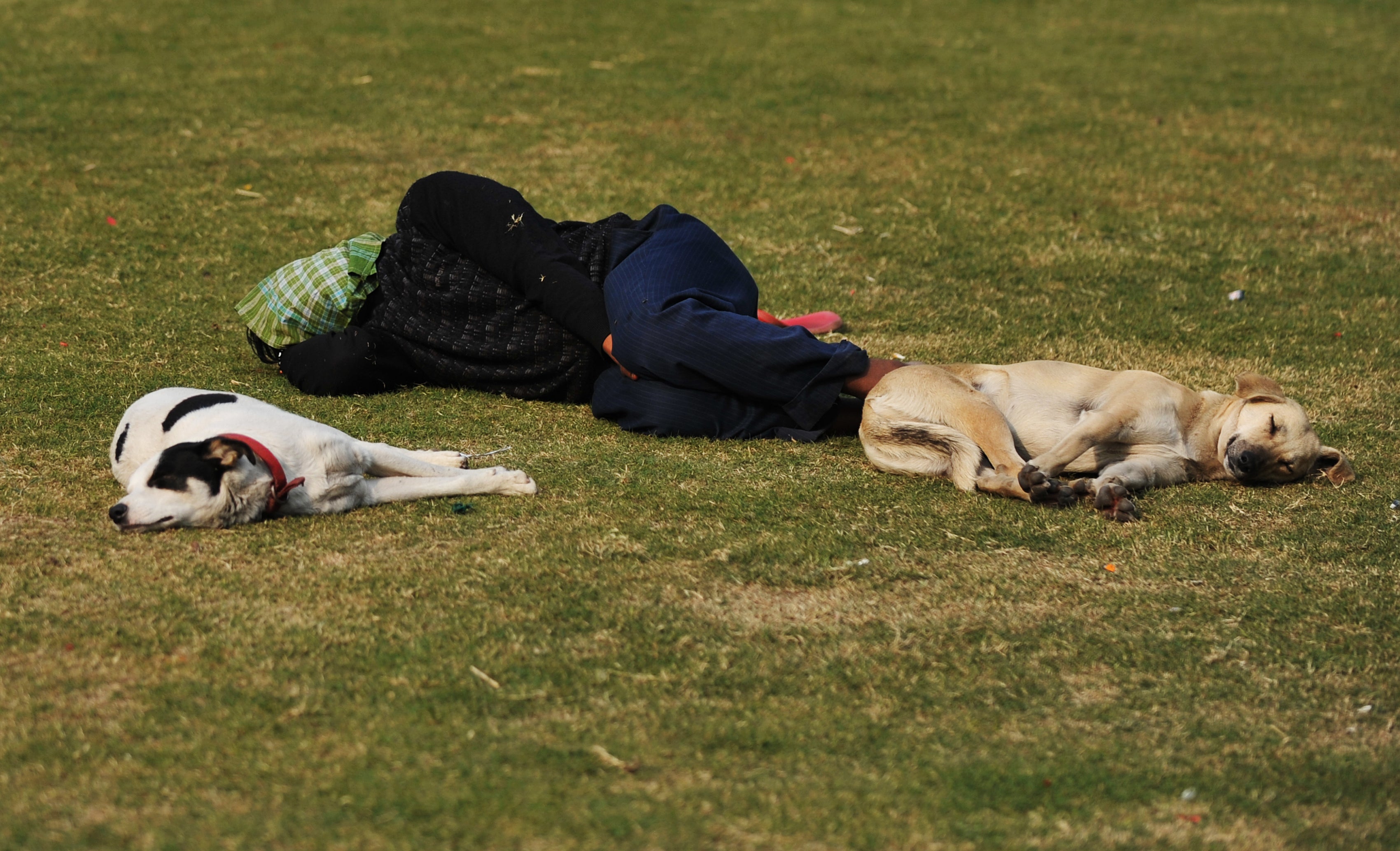How the brutal killing of a beloved street dog in India is changing animal rights
Bollywood stars are joining animal lovers in calling for stricter laws after the killing of Jai in Mumbai sparked widespread outrage. But experts say the real issue is not the legal system, but rather the way people treat animals in India today. Shahana Yasmin reports

Late last month the popular Indian television actor Sudhanshu Pandey received a distressing call from his wife while out for a morning walk. “She kept saying ‘somebody killed him’,” he recalled.
“I rushed to the scene, and saw him lying in a pool of blood. My soul is scarred forever from ... seeing the lifeless body of Jai,” Pandey, 49, explained in an interview with an Indian national. Jai was a beloved stray dog who stayed in Pandey’s apartment complex in an upscale neighbourhood of India’s financial capital Mumbai.
Over the next few days, details emerged about the gory circumstances surrounding the dog’s death, followed by calls for justice led by Pandey and other residents who looked after Jai and his brother Veeru (named after the protagonists of cult Bollywood film Sholay).
“We considered him our child,” he told the Hindustan Times. “We are heartbroken. His brother too is scared and hasn’t been eating since then.”
According to an initial police chargesheet, Jai had chased after the daughter of a man living in the neighbourhood. The man is said to have returned in the dead of the night with a stick and beaten the dog to death.
Police have denied online rumours that the man who killed Jai was let go after paying just ₹50 (48 pence) – the maximum penalty that can be imposed under Indian law for any kind of violence towards animals, including poisoning stray dogs, brutally beating them to death, or burning them alive. Police sub-inspector Aakash Waghmare said no arrests had yet been made but they are “using CCTV cameras to identify the accused, and we will take action”.
The incident is one in a long line of events of canine-human conflict that regularly make the news in India and provoke outrage on social media. It has also led to calls for the law to be revised to prevent such cruelty to animals, with higher penalties for perpetrators.
On one side of the debate are those who believe street dogs should be removed from neighbourhoods and culled, and on the other are animal rights activists trying to create an environment where man and animal can coexist with no need for violence on either side.
India is home to an estimated 62 million stray dogs, according to a 2021 report from global pet nutrition company Mars Petcare India. India also sees exceptionally high levels of pet abandonment – about 50 per cent of current and previous owners say they have relinquished a pet in the past, compared to 28 per cent globally.
Data from the World Health Organisation also shows that out of an estimated 59,000 deaths from rabies globally every year, India contributes 36 per cent. Reports of dog bite cases increased from 2,180,000 to 2,750,000 between 2022 and 2023, the most recent government data available. The western state of Maharashtra, of which Mumbai is the capital, recorded the highest numbers last year with 435,000 cases.

These numbers are often cited as justification for culling measures, yet they make no distinction between bites from strays and those from pets – the Narendra Modi government only started asking states to record these separately in March this year. A 2015 report put together by the Ernakulam General Hospital in Kerala showed that stray dogs accounted for only 24.4 per cent of their bite cases.
Part of the outrage around Jai’s case stemmed from reports that he had been charged under the Prevention of Cruelty to Animals Act (PCA), a law from 1960 which set the amount needed for bail at just 50 rupees. It saw the phrase #NoMore50 trending on Twitter/X, something that has also happened after previous animal cruelty cases.
Animal rights researcher Alok Hisarwala says the PCA law was never meant to deal with “this kind of violent outbreak of crime against animals that we are now beginning to understand in our society”.
He says that while the PCA law still exists in the statute book, in reality, police typically charge perpetrators under sections 428 and 429 of the Indian Penal Code, which states that anyone found guilty of “killing, poisoning, maiming or rendering useless any animal” is punished with imprisonment of up to five years or a fine, or both. It is under these sections that the initial police chargesheet has been filed in the case of Jai’s killing.
On this basis, India actually has a strong legal framework to act as a deterrent towards violence against animals – the fact it isn’t working points to a deeper problem beyond the implementation of these laws.
“These [#NoMore50] demands come from a detached understanding of the realities of the justice system, and what we should be talking about is what we are doing collectively to contribute to or prevent this violence in the first place,” Hisarwala tells The Independent.
The Federation of Indian Animal Protection Organisations released the first-of-its-kind report in 2021 that showed that 493,910 animals were victims of crimes committed by humans between 2010 to 2020 in India. The report states that due to a lack of reporting, the actual figures could easily be at least 10 times higher.
The National Crime Records Bureau of India releases an annual report on crime statistics from across the country but does not include offences under the PCA, which too is a criminal statute. Experts and animal rights activists have advocated for the inclusion of violence against animals, pointing to research that a clear link exists between violence toward humans and animal abuse.
But Hisarwala believes the problem goes deeper. “In their mind, crimes are only committed against human beings. And cruelty is committed against animals, which in their mind is not a real crime. So first, we need to talk about violence.”
The Animal Birth Control (ABC) Rules, 2023, broadly classifies dogs as pets and strays, and states that the local administration should be responsible for sterilising and vaccinating strays, and that euthanasia is permitted only if the dog is terminally ill, not for population control.

Many say not being able to cull strays is the reason behind their increasing numbers in India, but activists say it is the inefficient way the ABC guidelines are carried out that leads to human-canine conflict. In London, the Great Plague of 1665 was caused by the killing of what Daniel Defoe estimated in his heavily fictionalised account was “forty thousand dogs, and five times as many cats”. Closer to home, the 1994 plague in Surat took place shortly after stray dogs were removed from the city.
Activists say that an effective sterilisation programme ensures that community dogs are surgically neutered and then returned to their own area. Since their territories are not left vacant, new dogs cannot enter, and mating and breeding also cease.
“With no mating or crossing of territories, dog fights reduce dramatically and bites to humans also become rare. Displacing or killing dogs does not work because other dogs quickly repopulate areas which are emptied. When dogs are sterilised, they become stable, non-breeding, non-aggressive and rabies-free, and their population gradually decreases over a period of time,” says Meet Ashar, animal rights advocate and legal adviser at PETA India.
The ABC guidelines also include providing safety to feeders, and Ashar describes responsible feeders as performing a community service. “If a dog’s stomach is full, they are not going to chase after someone walking with a packet of food. Also, when the municipal corporation needs to catch the dogs for sterilisation, how will they manage without the feeder, who has ensured these dogs are friendly to humans?”

While dog-friendly residents are an important part of the solution, Geeta Seshamani from the animal welfare NGO Frendicoes says resident welfare associations (RWA) – non-profits representing the interests of the residents of a specific urban or suburban locality – in Delhi often act as hurdles to their work.
“RWAs rarely care for any laws to do with animal welfare and it does lead to unusually bitter fights within a colony. Almost every day without respite we are stopped from releasing sterilised vaccinated dogs or cats back into their areas,” she says.
This, in addition to the financial costs, has led to a major delay in India’s sterilisation programmes. Mansi Rautela, co-founder of animal rescue/rehabilitation organisation Wagging Tales Foundation, cited costs of anywhere between ₹4,000-6,000 (£38-57) per dog, which includes the surgery itself, pre- and post-op care, and vet charges. Wagging Tales Foundation manages by using corporate social responsibility funds and donations, and Seshamani says Frendicoes receives a subsidy for their designated ABC units from animal husbandry departments.
However, Seshamani says the rates fixed are not entirely fair and the funds don’t always arrive on time. “The Animal Welfare Board of India has estimated ₹1650 as the actual costs of the entire sterilisation process, but there are always hidden costs like electricity, water, generators, pick up and release of the animals, as well as additional costs for sick dogs.
Wagging Tales conducted sterilisation programmes for over 900 dogs in 2023 and over 300 in 2024 so far, and Frendicoes manages to sterilise anywhere between 80,000 to 110,000 dogs in their 13 centres across four states.

Both she and Rautela point out that irresponsible pet ownership is to blame for the attitudes towards dogs, strays and pets alike.
Seshamani says their shelters are full of dogs that were sold by unethical breeders, who were abandoned because owners don’t want a dog “that looks half-bred or a desi [Indian] when they paid for a pedigree.”
“Dogs born as a result of overbreeding also result in inbred and disease-prone pups, which in turn also contribute to abandonment,” she explains.
“Owners dump the dogs in the streets when it gets too expensive to care for them and breeders abandon dogs that they’ve kept around for breeding till they’re emaciated skeletons, barely able to walk with failing immune systems. All these cruelties and crowding of shelters can be stopped simply by controlling breeding of pedigrees with strict licensing laws.”
Rautela agrees, saying: “Most of the dogs that end up requiring rehoming were bought as a gift for a kid in the family, a hobby, or because they saw something on Instagram and thought it looked cute, without the understanding that the responsibility and care is for life,” she says.
Rescuers, animal rights organisations, and activists encourage responsible pet ownership, but especially adopting over buying. Ashar says the simplest solution to reducing the number of strays on the street is to adopt.
“If you are a dog or a cat lover, since when did the breed start to matter?”






Join our commenting forum
Join thought-provoking conversations, follow other Independent readers and see their replies
0Comments